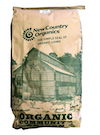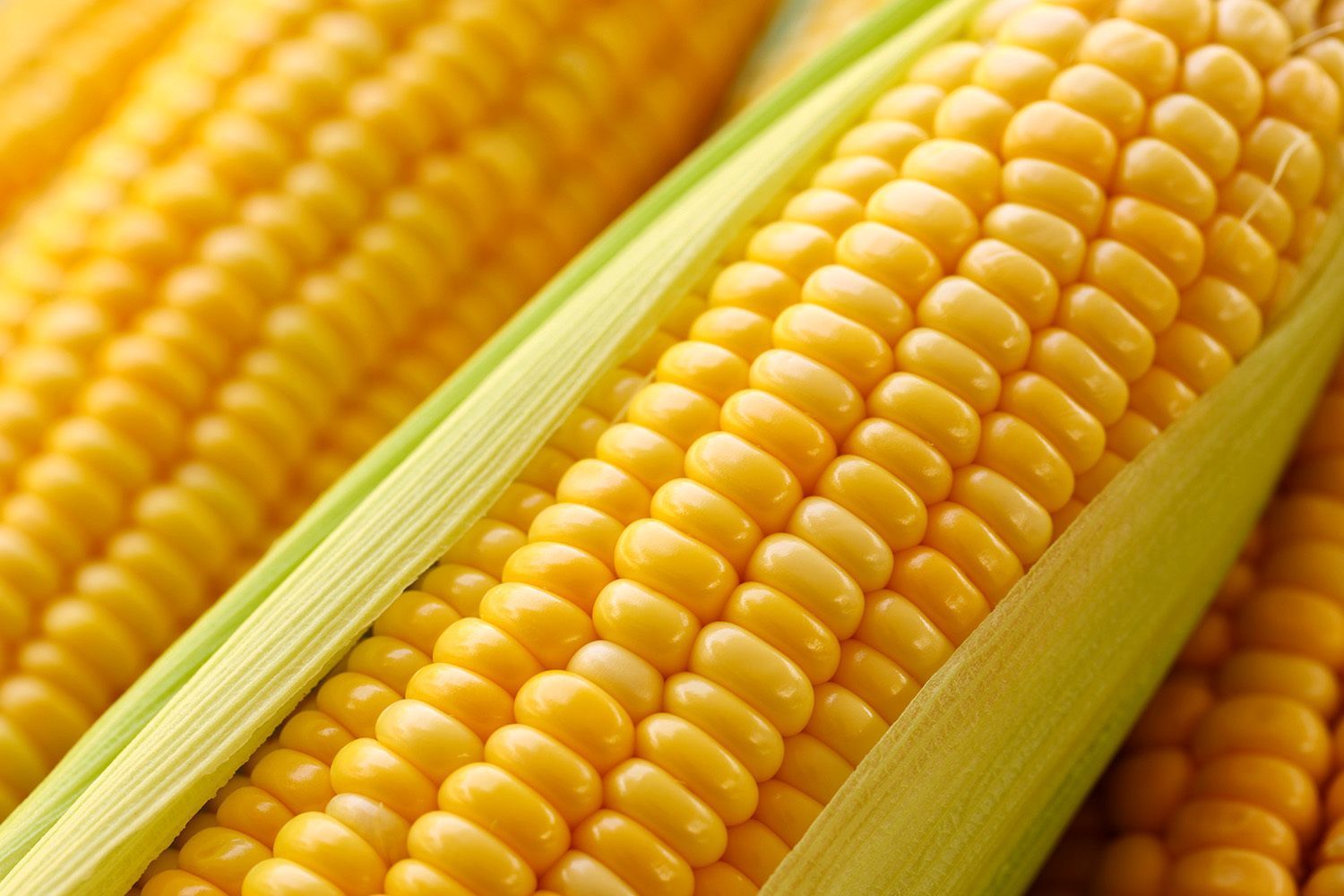What’s Science Saying About Corn?
Corn is often misunderstood as a feed ingredient. It seems that everywhere you look, corn is either at the top of the ingredients list or it's labelled as a "filler ingredient" and removed entirely. As a result, public opinion of corn also tends to lean to one extreme or the other, and there's a lot of uncertainty and miscommunication about what corn is and how it can best be used. Today, let's take a deeper look at corn and find out just what makes this grain such a divisive topic.
Nutritious, or not?
When you take a close look at corn, it's clear that it's one of the most nutrient dense and easily digested ingredients out there - when it's flaked, rolled, cracked, or otherwise not whole. (1) It has a very high starch content, making it a great source of energy for most animals. In fact, corn produces the most digestible nutrients per acre of land used. It contains reasonably healthy levels of important minerals such as zinc and magnesium, it's readily available, it's easy to grow, and it keeps nicely on the shelf. (2) So, what's the problem?
The problem (mostly) doesn't lie with corn itself. While corn in its whole form isn't very digestible for most animals, most corn we feed to animals has been processed in a non-invasive way and that makes the corn plentiful in nutrients. In moderation, corn can be a great ingredient in a feed and a cost-effective way of boosting the energy level in a feed. (1) The issue is that this ingredient is often over-utilized. It tends to be lower in protein than other grains, particularly in the protein building blocks (amino acids) lysine and tryptophan. In some animals, such as swine, lysine is the first limiting amino acid in their diet. This means that without enough of that amino acid, their body is unable to make enough proteins to properly work. As a result, lysine usually has to be supplemented in swine diets because those diets are generally formulated with a primary ingredient of, you guessed it, corn. (2)
Further, tryptophan is also often a limiting amino acid as well as being the building block to important chemicals like the "happy chemical" serotonin, and the "sleepy chemical" melatonin. Given that animal happiness leads to higher quality products with better consumer perception (3), and melatonin is vital to many animals' reproductive cycles, having the primary ingredient of the feed low in both of these essential amino acids seems a bit counter-productive.
What about supplements?
Both lysine and tryptophan are available in supplement form, however, the method for extracting those amino acids from their ingredients is a fairly intensive chemical process that requires a lot of energy. We are coming up with newer, better, and more efficient ways of making these supplements all the time, (4) but producing these supplements for use in animal production still isn't as efficient as just having the amino acid present in the feed to begin with, without supplementation. Not to mention, there are still some other reasons to reduce the use of corn in animal feeds other than nutrition.
What other reasons do we have to use less corn?
Corn is often bred or genetically modified to better withstand the regular use of heavy-duty pesticides. It has become widely known in recent years that these kinds of pesticides pose serious health risks to both humans and animals, and their continued use as a "corner cutting" method instead of adopting more holistic and big-picture methods of agriculture has become a serious problem. Organic corn, of course, is also an option and doesn't use these pesticides. However, corn in general is often grown as a monoculture crop, which tends to degrade soil quality over time. This soil degradation then, in turn, leads to a higher need for fertilizers and soil management. (5)
Crop rotation and more intensive farming methods are the answer to these problems, (6) but in our current system of agriculture in the USA, corn is a whopping 95% of all grain crops grown. Between the heavy usage of corn in ethanol production, animal production, household foodstuffs, and the subsidies that make corn so affordable as a crop, (7) the monoculture system of corn growth is likely to stick around until we do something about it.
Oh, goodness. What can be done?
Good news! It's pretty easy to help. Buying organic helps reduce the number of pesticides and agricultural runoff entering our air and water. Using less corn helps reduce demand for corn, which helps incentivize crop rotation. Using more ingredients other than corn helps balance diets holistically, without the need for additional supplements.
It's also worth noting that corn isn't necessary to a balanced animal diet. Many quality ingredients are waiting for a chance to be utilized in a healthy and nutritious diet, such as wheat, barley, field peas, milo, and more. When used together, especially with corn below number one on the ingredients list of the feed, an animal can thrive with more complete nutrition that's just as delicious. The best part is, you don't have to stop using corn entirely, just reduce demand on corn in a way that benefits you and your animals.
What is New Country Organics doing about corn?
We just introduced our Pasture Perfect line of poultry feeds. These feeds contain no corn, but still come balanced with all the nutrition your chicks, poults, and layers need for healthy, happy production. We also have our standard super-premium corn-free line of chicken feeds for any life-stage of your flock. Thanks to increased demand for corn-free products in addition to our already 100% soy-free formulations, we are also in the process of formulating new corn-free feeds for other animals, fresh for your farm. Keep an eye out for these exciting new feeds!
If you love how your animals do with corn in their diet, though, fear not. We still have corn-inclusive diets that are balanced with other ingredients, as well as fortified with vitamins and minerals for all your animals’ nutritional needs. We take pride in making sure our products are high quality and wholesome both for the planet and the animals they’re fed to. You can rest assured that we’re doing our best to give you the best quality possible, regardless of the feed you’re purchasing.
Further reading:
1. Freitas TB, Felix TL, Clark C, Fluharty FL, Relling AE. Effect of feeding dry-rolled corn or whole shelled corn during the finishing phase on growth performance and carcass characteristics. Transl Anim Sci. 2020 Dec 15;5(1):txaa228. doi: 10.1093/tas/txaa228. PMID: 33506180; PMCID: PMC7819466.
2. Pond WG, Church DC, Pond KR, Schoknecht PA. (2005) Basic Animal Nutrition and feeding 5th edition
3. Heather J. Bray & Rachel A. Ankeny (2017) Happy Chickens Lay Tastier Eggs: Motivations for Buying Free-range Eggs in Australia, Anthrozoös, 30:2, 213-226, DOI: 10.1080/08927936.2017.1310986
4. Sledz, P., Zheng, H., Murzyn, K., Chruszcz, M., Zimmerman, M.D., Chordia, M.D., Joachimiak, A. and Minor, W. (2010), New surface contacts formed upon reductive lysine methylation: Improving the probability of protein crystallization. Protein Science, 19: 1395-1404. https://doi.org/10.1002/pro.420
5. Food and Energy Security 2017; 6( 3): 89– 93
6. Raimbault, B.A. and Vyn, T.J. (1991), Crop Rotation and Tillage Effects on Corn Growth and Soil Structural Stability. Agron. J., 83: 979-985. https://doi.org/10.2134/agronj1991.00021962008300060011x
7. USDA. (2022) Feedgrains Sector at a glance. https://www.ers.usda.gov/topics/crops/corn-and-other-feedgrains/feedgrains-sector-at-a-glance/#:~:text=Corn%20is%20the%20primary%20U.S.,of%20corn%20in%20the%20world.
8. https://www.feedtables.com/



